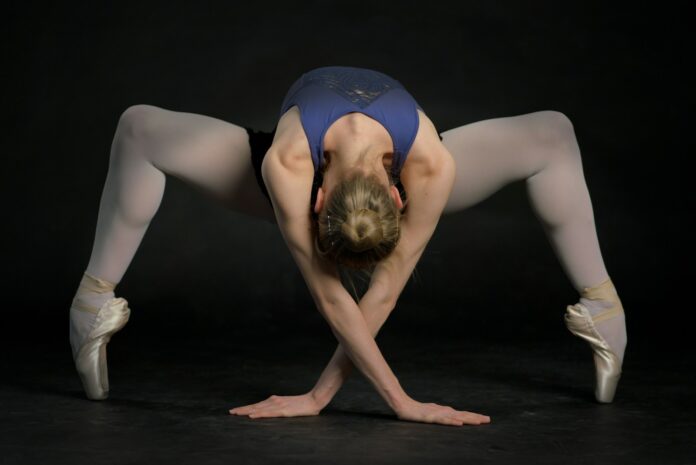Athletes are known for their discipline, strength, and stamina. Training like an athlete is about more than just physical fitness—it’s a holistic approach that encompasses proper exercise, nutrition, and recovery. The good news? You don’t need a professional coach or a state-of-the-art facility to adopt an athletic training regimen. With the right mindset and science-backed strategies, you can train like an athlete and achieve peak performance on your own.
1. Set Clear Goals
Athletes train with purpose, focusing on specific goals to improve performance. Start by identifying what you want to achieve.
Examples of Goals:
- Improve strength and build muscle.
- Increase endurance for running or cycling.
- Enhance flexibility and mobility.
- Master a sport-specific skill like dribbling or sprinting.
Break your goals into smaller, measurable milestones, and track your progress regularly.
2. Follow a Structured Training Plan
Athletes rely on structured routines to maximize their results. Design a weekly workout plan that balances strength, endurance, and recovery.
Example Weekly Plan:
- Monday: Strength training (upper body focus).
- Tuesday: Cardio or endurance training (running, cycling, or swimming).
- Wednesday: Active recovery (stretching or yoga).
- Thursday: Strength training (lower body focus).
- Friday: High-intensity interval training (HIIT).
- Saturday: Sport-specific practice or functional movements.
- Sunday: Rest or light activity (walking or foam rolling).
Stick to your plan and adjust as needed based on your progress and energy levels.
3. Prioritize Strength Training
Strength is a cornerstone of athletic performance. Building muscle improves power, speed, and overall physical resilience.
Key Strength Training Tips:
- Focus on compound exercises like squats, deadlifts, bench presses, and pull-ups.
- Use progressive overload by gradually increasing the weight or resistance.
- Incorporate bodyweight exercises (push-ups, lunges, planks) for functional strength.
Start with 2–3 strength training sessions per week and gradually increase intensity.
4. Include Endurance Workouts
Endurance is essential for stamina and cardiovascular health. Incorporate aerobic and anaerobic activities into your routine.
Endurance-Building Activities:
- Long-distance running or brisk walking.
- Swimming laps or cycling.
- Rowing or using an elliptical machine.
For variety, try interval training, alternating between periods of high intensity and recovery, to build endurance efficiently.
5. Work on Mobility and Flexibility
Athletes need flexibility and mobility to perform at their best and reduce the risk of injury. Regular stretching and mobility exercises should be part of your routine.
Mobility Tips:
- Warm up with dynamic stretches like leg swings and arm circles.
- Cool down with static stretches for key muscle groups.
- Use foam rollers to release muscle tension and improve flexibility.
Practicing yoga or pilates once a week can also enhance mobility and body awareness.
6. Fuel Your Body Like an Athlete
Athletic training requires optimal nutrition to fuel workouts and support recovery. Focus on eating nutrient-dense foods that meet your energy needs.
Key Nutrition Guidelines:
- Protein: Build and repair muscles with lean meats, eggs, tofu, and legumes.
- Carbohydrates: Provide energy for workouts. Choose whole grains, fruits, and vegetables.
- Healthy Fats: Support overall health with avocados, nuts, and olive oil.
- Hydration: Drink plenty of water and replenish electrolytes during intense workouts.
To supplement your diet, consider Myprotein products for high-quality protein powders, recovery blends, and vitamins tailored to active individuals.
7. Train Your Mind
Athletes know that mental strength is just as important as physical ability. Build focus, discipline, and resilience with mental training techniques.
Mental Training Tips:
- Set short-term and long-term goals to stay motivated.
- Practice visualization by imagining yourself achieving your goals.
- Use mindfulness or meditation to reduce stress and enhance focus.
“Athletic training starts in the mind—discipline fuels success.”
8. Incorporate Functional Movements
Functional training mimics real-life movements and improves balance, coordination, and core strength.
Functional Training Exercises:
- Kettlebell swings for power and endurance.
- Farmer’s carries to build grip strength and core stability.
- Plyometric exercises like box jumps to improve explosive power.
Functional movements are especially useful for improving athletic performance in specific sports.
9. Recovery Is Non-Negotiable
Athletes understand that recovery is as important as training. It allows your body to repair, rebuild, and grow stronger.
Recovery Strategies:
- Sleep: Aim for 7–9 hours of quality sleep each night to support muscle repair and mental recovery.
- Active Recovery: Light activities like walking or stretching keep your body moving without overexertion.
- Nutrition: Refuel with a post-workout meal rich in protein and carbs.
For faster recovery, explore supplements like Myprotein recovery products to replenish glycogen stores and support muscle repair.
10. Track and Adjust
Athletes continually assess their performance and make adjustments to their training plans. Tracking your progress helps you stay motivated and identify areas for improvement.
How to Track Progress:
- Keep a workout log detailing exercises, sets, reps, and weights.
- Record performance metrics like running times or strength benchmarks.
- Take regular photos or measurements to monitor physical changes.
Use your data to tweak your routine and ensure you’re on track to reach your goals.
Conclusion
Training like an athlete without professional help is entirely possible with a structured plan, dedication, and the right resources. By focusing on balanced workouts, proper nutrition, and mental resilience, you can achieve peak performance and maintain a healthier, stronger body.
For additional support, check out Myprotein products for high-quality supplements that fuel your journey. For more tips on leading an active, healthy lifestyle, visit Lifestyle Home and take your first step toward training like a pro today!

